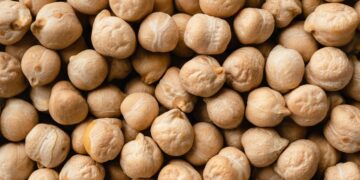Agricultural Cooperation – China and Ukraine took a significant step in agricultural trade in the sectors of pea and aquatic products. In March 2025, Ambassador Ma Shengkun, representing China’s General Administration of Customs, and Director Tetiana Tkachuk of Ukraine’s State Service for Food Safety and Consumer Protection signed two bilateral agreements – the “Protocol on Phytosanitary Requirements for Ukrainian Peas” and the “Protocol on Inspection, Quarantine and Hygiene Requirements for Ukrainian Wild Seafood”.
“China-Ukraine agricultural cooperation potential is huge as the two countries are highly complementary in this sector”, said Ma at the signing ceremony , “the two agreements, he said, will further expand farm product trade and cooperation, contributing to the China-Ukraine strategic partnership.”
The Backstory:
- Diversifying Supply: China currently relies on Russia for 47% of its pea imports, Canada for 43%, and the US for 4%. After the escalation of China – US tariff tensions, Ukrainian peas, with a protein content of over 28% and a cost that is 8% – 10% lower than Canadian peas, have become a key alternative. This is expected to lower the prices of products like plant – based meats and meal replacements. The move not only reduces dependence on the US but also ensures the supply of raw materials for China’s plant – based food industry.
- Economic Relief for Ukraine: With agriculture accounting for a major share of its GDP and central farming zones untouched by conflict, Ukraine produces over 3 million tons of peas annually, including 500,000 tons ready for export. The new protocols promise vital foreign‑exchange earnings for Ukraine’s war‑impacted economy.
The Road to Market
With the agreements now finalized, Ukrainian producers are eyeing the Chinese market, with exports set to begin as early as August 2025. Once the requisite quarantine and inspection processes are completed, Ukrainian peas are expected to hit Chinese shelves in the near future. The arrival of these high-quality, competitively priced peas could have broader economic implications, notably lowering raw material costs for China’s burgeoning plant-based food sector. This, in turn, may drive down prices for plant-based meats, protein powders, and other pea-derived products, providing a welcome boost to consumers and businesses alike. The trade deal not only opens a new chapter for Ukraine’s agricultural exports but also strengthens China’s push for food security through diversified global sourcing.
China Trade Partners of Dried Pea
| No | 202501-202503 | No | 202401-202412 | |||||
| Origin | Import volume, kg | Import value, USD | Volume YOY | Origin | Import volume, kg | Import value, USD | ||
| 1 | Canada | 200,310,621 | 89444687 | -22.37% | 1 | Russia | 646,458,153.00 | 221,814,723 |
| 2 | Russia | 167,844,699 | 55492834 | 19.87% | 2 | Canada | 592,595,646.00 | 262,123,744 |
| 3 | the United States | 24,656,586 | 13732375 | -56.75% | 3 | the United States | 51,029,856.00 | 28,736,328 |
| 4 | Australia | 15,249,250 | 6691971 | -69.67% | 4 | Australia | 43,180,100.00 | 18,421,476 |
| 5 | Argentina | 7,953,460 | 4197476 | -98.04% | 5 | France | 32,264,713.00 | 14,334,482 |
| 6 | France | 5,236,520 | 2352146 | 67.84% | 6 | Kazakhstan | 18,920,254.00 | 5,285,229 |
| 7 | Kazakhstan | 3,116,000 | 925354 | / | 7 | New Zealand | 1,913,500.00 | 2,175,816 |
| 8 | the United Kingdom | 154,000 | 146237 | 214.29% | 8 | the United Kingdom | 1,703,720.00 | 1,727,421 |
| 9 | New Zealand | – | – | / | 9 | Argentina | 415,500.00 | 187,174 |
| 10 | Myanmar | – | – | / | 10 | Myanmar | 363,000.00 | 153,234 |
| 11 | India | – | – | / | 11 | India | 3,000.00 | 6,750 |
| Grand Total | 424,521,136.00 | 172,983,080.00 | -10.13% | Grand Total | 1388847442 | 554,966,377 | ||












